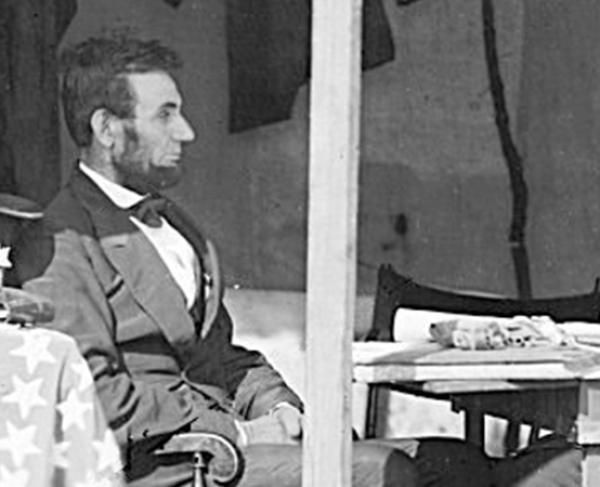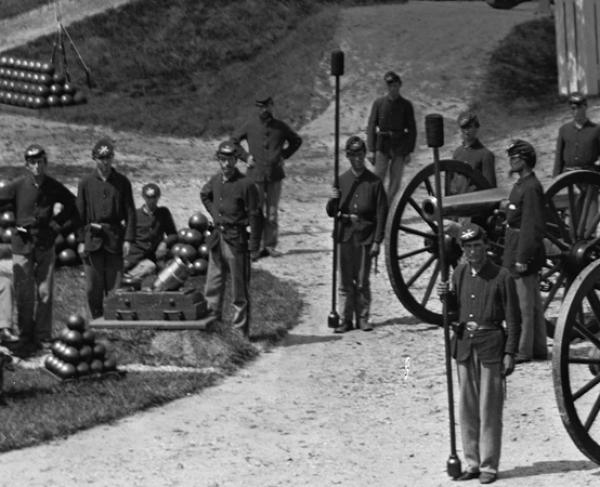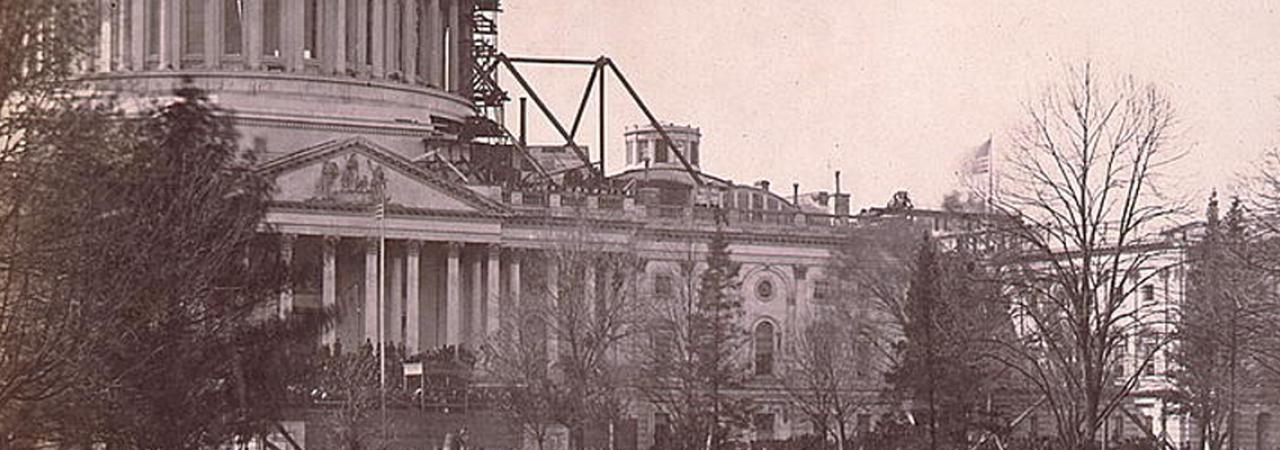
Washington, D.C., was the Union capital during the Civil War. It was home to the United States Government and served as a base of operations for the Union Army throughout the war. Originally designed by Pierre Charles L’Enfant after his home city of Paris, France, Washington, D.C., was to be a visionary metropolis. Washington, D.C., was one of the first major American cities to be constructed in a grid system, Philadelphia being the first. Washington was a city with a small population that housed mostly government officials at the beginning of the war. Washington was constructed upon a wetland area and experienced sweltering summer days and unrelenting winters. The city was underdeveloped in the antebellum period, and it had recently lost Alexandria, Virginia in 1846. The Commonwealth of Virginia wanted Alexandria due to the large slave trade market that was in Alexandria at the time, as well as Alexandrian officials feeling neglected by Congress. The Civil War, however, radically changed Washington for the better.
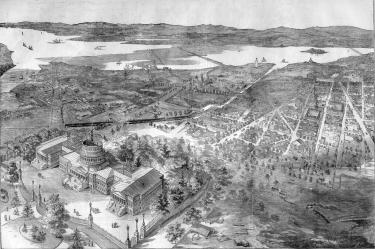
When the Civil War began, newly elected President Abraham Lincoln was only 40 days into his term as President. After the Confederate firing on Fort Sumter and Lincoln’s call for 75,000 volunteers to quell the growing rebellion, Virginia seceded from the Union. Lincoln took great measures to ensure that Maryland, a slave state, did not secede from the Union lest Washington be surrounded by Confederate states. Lincoln imprisoned secessionists in Maryland to prevent Maryland’s secession, and Lincoln’s bold strategy worked.
Throughout the war, Washington saw an exponential increase in population, like its Confederate counterpart, Richmond, Virginia. At the start of the war, 75,080 people lived in Washington, but that number boomed to 200,000 at its peak. By 1862, Lincoln began enacting policies to increase the power of the Federal government in Washington such as military policing, prohibition laws, and anti-vagrancy laws. With an expanding population, however, public health often took a back seat to dedicating resources to wounded Union soldiers arriving from the frontlines. The Federal capital saw waves of smallpox run through the city. Generals trained their armies and crafted strategy in and around Washington. Lincoln would often check in on the military to personally oversee the war effort.
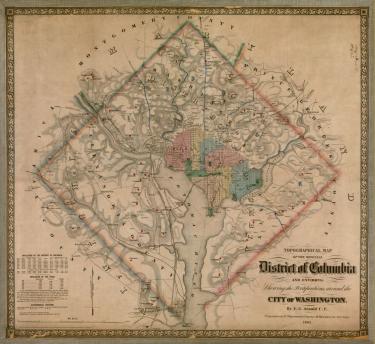
The well-defended city did not experience much combat. When General George B. McClellan took command of the principal Union Army of the Potomac, he built fortifications that stretched 33 miles. By the time McClellan was finished with constructing fortifications, Washington was one of the most fortified cities in the world. The city defenses were nearly impenetrable. Confederate forces did not want to attack Washington directly due to the mountainous defenses. The Confederates made false advances towards Washington to spook Lincoln the high command. One advance was Thomas J. “Stonewall” Jackson’s campaign in the Shenandoah Valley in Spring of 1862, forcing the Union to dedicate forces away from Richmond and towards the Shenandoah Valley. The Union was focused on keeping the war in the South, and the capital in Union hands. Confederates hardly ventured north of the Mason-Dixon Line. Among the few times that the South did venture north, was at Antietam, which was fought before mid-term elections in the Union, and Gettysburg, which was fought one year before Presidential elections. In July of 1864, Lt. Gen. Jubal Early assaulted Fort Stevens, on the north side of Washington. During the battle, Lincoln came under enemy fire and was nearly shot. Jubal Early’s intent with this raid was not to capture and hold Washington, but to divert Union forces from Petersburg to relieve the Confederates from the siege at Petersburg.
While Washington was not much of a military battleground, it was a political battleground. Throughout the war, there was a massive debate about whether to free the enslaved population and perpetually grant enslaved people freedoms. So-called “radical” Republicans and Democrats faced off in the House and Senate chambers debating the soon to be freed people’s rightful freedoms. Lincoln’s original stated war aim was to preserve the Union. Lincoln explained to newspaper editor Horace Greely in August of 1862 that he wanted reunification no matter the cost and wanted to take caution in emancipating slaves in the country. His position on slavery dramatically changed, however, after the Battle of Antietam. Lincoln issued the preliminary Emancipation Proclamation just after the battle which would on January 1, 1863, effectively free all slaves in areas that were in rebellion, but not in the border states of Maryland, Delaware, and Kentucky. Congress passed the 13th Amendment to the Constitution, abolishing slavery in all states present and future in January of 1865, ending the institution of slavery that plagued the United States since its inception.
Towards the end of the war, the city’s water supply ran low due to massive overpopulation. The Army Corps of Engineers constructed an aqueduct to accommodate the city’s need for water. Washington’s police and fire departments were revitalized to provide efficient service to the newly settled residents in Washington. Washington was in the throes of becoming the modern city that L’Enfant and the Founding Fathers had hoped it would become.
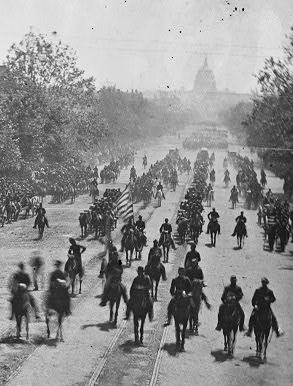
At the end of the war, Washington was a sprawling city that became a major city on the eastern coast of the United States. With the 13th, 14th, and 15th Amendments passed and inscribed in the Constitution, formerly enslaved people were now free under the law. Washington became a new hub for many of these formerly enslaved individuals, including Frederick Douglass. On April 14th, 1865, just mere days after the surrender of Robert E. Lee’s forces at Appomattox Court House, Virginia, Abraham Lincoln was shot in Ford’s Theater by the assassin John Wilkes Booth, a Confederate sympathizer. Lincoln died in the Peterson Boarding House in Washington the next morning. After Lincoln’s death. Andrew Johnson, a southern Democrat, assumed the Presidency. On May 23rd to 25th, 1865, Johnson organized a military precession throughout Washington called the Grand Review of the Armies. This celebration was the precursor to Memorial Day. In 1865, however, the Grand Review of the Armies signaled the end of the Civil War that had ravaged the country.
The Civil War signaled a turning point for Washington. Before the war the city was a merely small village, but, the Civil War turned Washington into becoming the grand city that it was intended to be. With the new rising population, the city expanded at a rapid pace. After the war, the city ushered into an age of liberty for all citizens. Once again, the Union was whole after four long years of a house divided against itself.
Further Reading:
- Reveille in Washington: 1860-1865: By Margaret Leech
- Lincoln's Citadel: The Civil War in Washington, DC: By Kenneth J. Winkle
- This Grand Experiment: When Women Entered the Federal Workforce in Civil War–Era Washington, D.C.: By Jessica Ziparo
Related Battles
374
500
